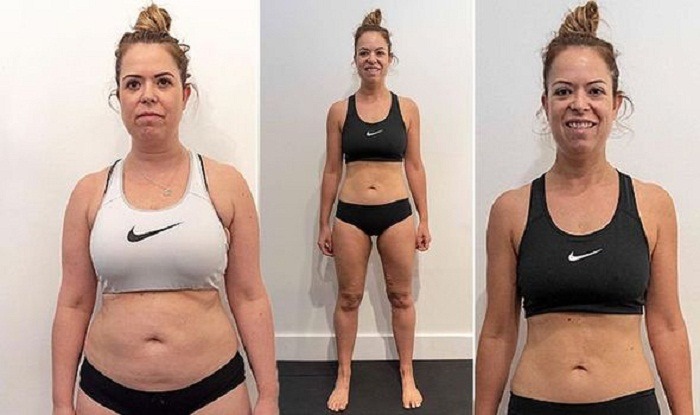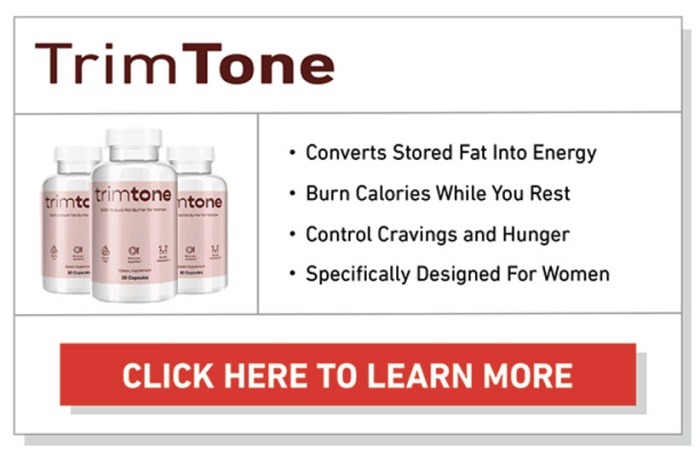Workout Routine for Women to Lose Weight
Contents
- 1 Workout Routine for Women to Lose Weight
- 2 Understanding Your Body and Goals
- 3 Building a Balanced Routine
- 4 Sample Workout Schedules
- 5 Beginner Routine (3 Days per Week):
- 6 Intermediate Routine (4-5 Days per Week):
- 7 Warm-Up, Cool-Down, and Rest
- 8 Making it a Lifestyle
- 9 Fueling Your Fitness Journey: Nutrition for Weight Loss
- 10 Sample Meal Plan:
- 11 Building a Support System and Overcoming Challenges (Focus on healthy habits, not supplements)
- 12 Support System:
- 13 Disclaimer on Supplements:
- 14 Overcoming Challenges:
- 15 Beyond the Basics: Advanced Strategies for Weight Loss Success
- 16 Strength Training Progression:
- 17 Cardio Tweaks:
- 18 Mind-Body Connection:
- 19 Technology and Fitness Trackers
- 20 Finding Inspiration and Avoiding Comparison
- 21 Building a Sustainable Lifestyle
- 22 Conclusion:
- 23 FAQs (Frequently Asked Questions)
- 24 References
The desire to lose weight and feel good in your skin is a powerful motivator. But for women, navigating weight loss can be complex. This comprehensive Workout Routine for Women to Lose Weight empowers you with the knowledge and tools to craft a personalized workout routine that gets you closer to a healthier, happier you.
Related Post: Weight Loss For Women | Effective Ways For Women To Lose Weight
Understanding Your Body and Goals
Before diving into lunges and squats, take a moment to understand your unique needs:
- Current Fitness Level: Beginner, intermediate, or advanced? This determines exercise intensity and type.
- Weight Loss Goals: Setting realistic and sustainable goals is crucial.
- Body Composition: Targeting specific areas or overall weight loss?
- Medical Conditions: Consult your doctor before starting a new program.
Building a Balanced Routine
For effective weight loss, a well-rounded workout routine should incorporate:
- Cardio: Burns calories and improves overall fitness (brisk walking, jogging, swimming, cycling, dancing, HIIT).
- Strength Training: Builds muscle, and boosts metabolism (dumbbells, resistance bands, bodyweight exercises, weight machines).
- Core Work: Enhances posture, stability, and back health (planks, crunches, Russian twists, leg raises).
Sample Workout Schedules

Here are two sample workout schedules to get you started:
Beginner Routine (3 Days per Week):
- Day 1: Cardio (30 minutes) + Lower Body Strength (3 sets of 12-15 reps) – Squats, lunges, calf raises, bridges.
- Day 2: Rest or Active Recovery (light yoga, walking)
- Day 3: Cardio (30 minutes) + Upper Body Strength (3 sets of 12-15 reps) – Push-ups, rows, dumbbell presses, bicep curls, tricep extensions.
Intermediate Routine (4-5 Days per Week):
- Day 1: Cardio (40 minutes)
- Day 2: Lower Body Strength (3 sets of 10-12 reps) – Squats, lunges, deadlifts, Bulgarian split squats.
- Day 3: Rest or Active Recovery
- Day 4: Upper Body Strength (3 sets of 10-12 reps) – Push-ups, pull-ups (or assisted pull-ups), rows, overhead presses, bicep curls, and tricep extensions.
- Day 5: Cardio (30 minutes) + Core Work (3 sets of 15-20 reps) – Planks, crunches, side planks, Russian twists, leg raises.
Remember: These are examples. Adjust duration, intensity, and exercises based on your fitness level and goals.
Warm-Up, Cool-Down, and Rest
Never underestimate the importance of a proper warm-up (light cardio, dynamic stretches) and cool-down (static stretches). Listen to your body and take rest days when needed.
Making it a Lifestyle
Here are some additional tips to ensure your workout routine becomes a sustainable part of your life:
- Find activities you enjoy: Make workouts fun (dancing, hiking, group fitness classes).
- Set realistic goals: Aim for achievable goals to stay motivated.
- Track your progress: Monitor your progress to stay on track.
- Find a workout buddy or join a class: Social support boosts motivation.
Fueling Your Fitness Journey: Nutrition for Weight Loss
Exercise is key, but a healthy diet plays an equally crucial role:
- Calorie Counting: Understand your daily calorie needs for a healthy deficit.
- Macronutrients: Focus on a balanced intake of carbs, protein, and healthy fats.
- Micronutrients: Include plenty of fruits, vegetables, and whole grains for essential vitamins and minerals.
- Portion Control: Practice mindful eating and use portion control strategies.
- Hydration: Stay adequately hydrated for optimal health and performance.
Sample Meal Plan:
Here’s a sample meal plan to illustrate healthy eating for weight loss:
- Breakfast: Greek yogurt with berries and granola, or whole-wheat toast with scrambled eggs and avocado.
- Lunch: Salad with grilled chicken or fish, whole-wheat bread with tuna salad, or lentil soup with vegetables.
- Dinner: Salmon with roasted vegetables and brown rice, chicken stir-fry with whole-wheat noodles, or vegetarian chili with a side salad.
- Snacks: Fruits and vegetables with hummus, nuts and seeds, Greek yogurt, or hard-boiled eggs.
Remember: This is just a sample. Adjust your meals based on your individual needs and preferences.
Building a Support System and Overcoming Challenges (Focus on healthy habits, not supplements)
Having a support system can significantly increase your chances of success. Here’s how to build one and navigate challenges:
Support System:
- Workout Buddy: Find a friend to exercise with for motivation and accountability.
- Fitness Class: Group fitness classes offer a supportive and motivating environment.
- Personal Trainer: A trainer can create a customized program and guide your technique.
- Registered Dietitian: A dietitian can personalize a meal plan to meet your goals.
Disclaimer on Supplements:
While some people consider supplements, it’s crucial to consult with a doctor before starting any. They can interact with medications or have side effects. Focus on a well-rounded diet rich in whole foods before exploring supplements.
Overcoming Challenges:
- Expect setbacks: Don’t get discouraged by occasional slip-ups. Learn from them and get back on track.
- Celebrate non-scale victories: Focus on improvements in energy, strength, and overall well-being.
- Focus on progress, not perfection: Aim for consistency, not perfection.
- Reward yourself: Set healthy rewards for reaching milestones to stay motivated.
Remember: This journey is about creating a healthy and sustainable lifestyle, not just a number on the scale. Embrace the process, celebrate your victories, and enjoy the journey toward a healthier, happier you!
Beyond the Basics: Advanced Strategies for Weight Loss Success
Once you’ve established a solid foundation, you can explore advanced strategies:
Strength Training Progression:
- Increase Weight or Resistance: Gradually increase weight or resistance to challenge your muscles and promote growth.
- Compound Lifts: Focus on squats, deadlifts, lunges, rows, and push-ups to work multiple muscle groups and burn more calories.
- Supersets and Drop Sets: These techniques intensify workouts. Supersets involve performing exercises for opposing muscle groups back-to-back. Drop sets involve progressively decreasing weight while maintaining reps. (Consult a trainer if needed)
Cardio Tweaks:
- HIIT: Alternate short bursts of intense activity with rest or low-intensity exercise for efficient calorie burning.
- Interval Training Variations: Experiment with jumping jacks, burpees, mountain climbers, or swimming sprints for added variety.
- Active Recovery: On rest days, incorporate low-intensity activities like walking, yoga, or Pilates for recovery and mobility.
Mind-Body Connection:
- Stress Management: Practice stress management techniques like meditation, deep breathing exercises, or yoga to keep cortisol levels in check.
- Sleep Hygiene: Aim for 7-8 hours of quality sleep each night to regulate hormones that affect appetite and metabolism.
- Mindful Eating: Pay attention to your body’s hunger and fullness cues. Eat slowly and savor your food to avoid overeating.
Remember: These advanced strategies are not for everyone. Gradually introduce them after establishing a base and consult a healthcare professional if needed.
Technology and Fitness Trackers
Fitness trackers and apps can be valuable tools for:
- Monitor Progress: Track various metrics like calories burned, steps taken, and distance covered.
- Stay Motivated: Use apps for inspiration and goal setting.
- Find a Community: Connect with others on fitness apps for motivation and accountability.
Finding Inspiration and Avoiding Comparison
Social media can be a source of inspiration, but remember:
- Everyone’s Journey is Unique: Don’t compare yourself to others. Focus on celebrating your achievements.
- Follow Positive Accounts: Look for accounts promoting healthy habits, body positivity, and overall well-being, rather than just aesthetics.
Building a Sustainable Lifestyle
The key to long-term success lies in creating sustainable lifestyle changes:
- Make it enjoyable: Find activities you genuinely enjoy and look forward to.
- Don’t deprive yourself: Occasional indulgences are okay. Aim for balance and moderation most of the time.
- Listen to your body: Learn to recognize your body’s hunger and fullness cues. Don’t push yourself too hard during workouts, and take rest days when needed.
- Celebrate all victories: Weight loss is a journey. Celebrate your progress, big or small, to stay motivated.
Conclusion:
Shedding pounds and building a stronger, healthier you is an empowering journey. By combining a healthy diet, regular exercise, and a positive mindset, you can achieve your weight loss goals and create a sustainable lifestyle that supports your overall well-being. Remember, this is a marathon, not a sprint. Be patient, celebrate your progress, and enjoy the process of becoming the healthiest and happiest version of yourself!
FAQs (Frequently Asked Questions)
Getting Started:
- Q: I’m a complete beginner. Where do I start? A: This article provides a sample beginner workout routine. Start with 3 days per week, focusing on cardio and basic strength training exercises. Gradually increase intensity and duration as you get fitter. Consult your doctor before starting any new exercise program.
- Q: How much weight should I lift? A: If you’re new to strength training, start with lighter weights that allow you to perform 12-15 repetitions with good form. Gradually increase the weight as you get stronger. Consider consulting a personal trainer for guidance on weight selection and proper technique.
- Q: How often should I weigh myself? A: Weighing yourself daily can be discouraging. Aim for once or twice a week at most, and focus on tracking progress over time rather than obsessing over daily fluctuations.
Diet and Nutrition:
- Q: How many calories should I eat to lose weight? A: There’s no one-size-fits-all answer. Use online calculators or consult a registered dietitian to determine a healthy calorie deficit for your weight loss goals.
- Q: Do I need to cut out carbs to lose weight? A: No. Carbs provide energy for your body and workouts. Focus on complex carbs like whole grains, fruits, and vegetables instead of refined carbs like white bread and sugary drinks.
- Q: Is it okay to have cheat meals? A: Yes! Occasional indulgences are okay. Aim for balance and moderation most of the time. Listen to your body’s hunger cues and avoid restrictive dieting.
Motivation and Challenges:
- Q: How do I stay motivated? A: Find activities you enjoy, set realistic goals, track your progress, and find a support system. Celebrate your non-scale victories and reward yourself for reaching milestones.
- Q: What if I have a setback? A: Don’t get discouraged! Everyone experiences setbacks. See them as learning experiences and get back on track with your next meal or workout.
- Q: How do I deal with stress eating? A: Practice stress management techniques like meditation, deep breathing, or yoga. Identify healthy coping mechanisms to deal with stress instead of turning to food.
References
- American Council on Exercise (ACE): https://www.acefitness.org/
- Centers for Disease Control and Prevention (CDC): https://www.cdc.gov/healthyweight/index.html
- National Institute of Diabetes and Digestive and Kidney Diseases (NIDDK): https://www.niddk.nih.gov/health-information/weight-management/adult-overweight-obesity
- The American College of Sports Medicine (ACSM): https://www.acsm.org/
Disclaimer: This article is for informational purposes only and does not substitute for professional medical advice. Always consult with your doctor before starting a new exercise program or making significant changes to your diet.


